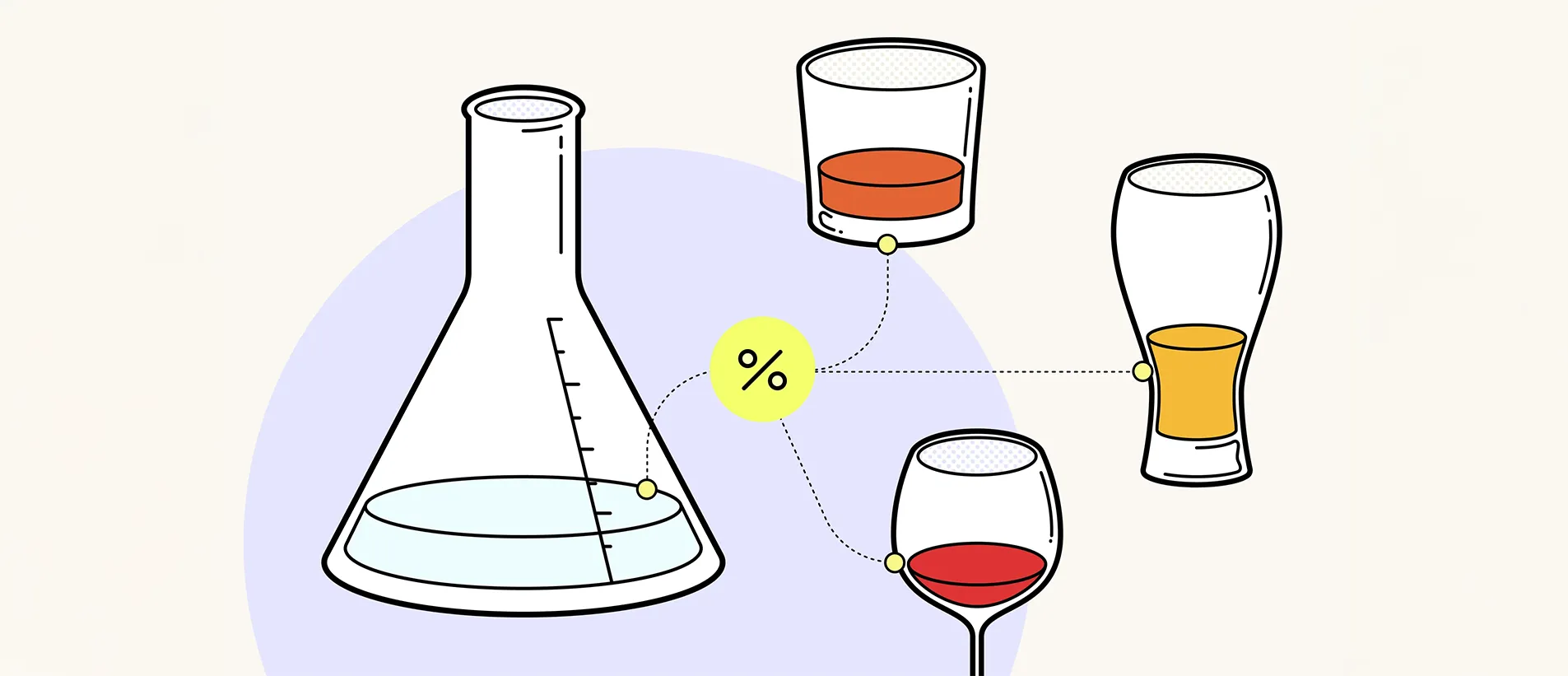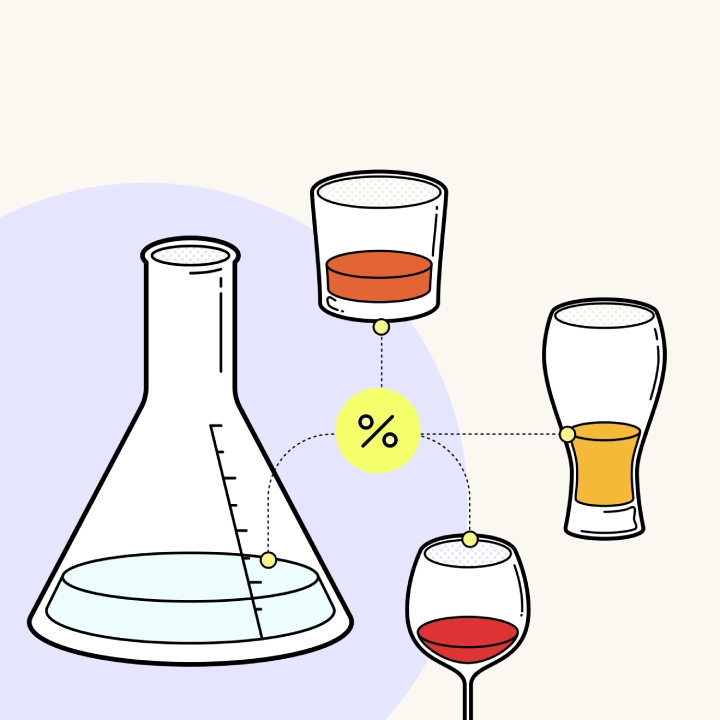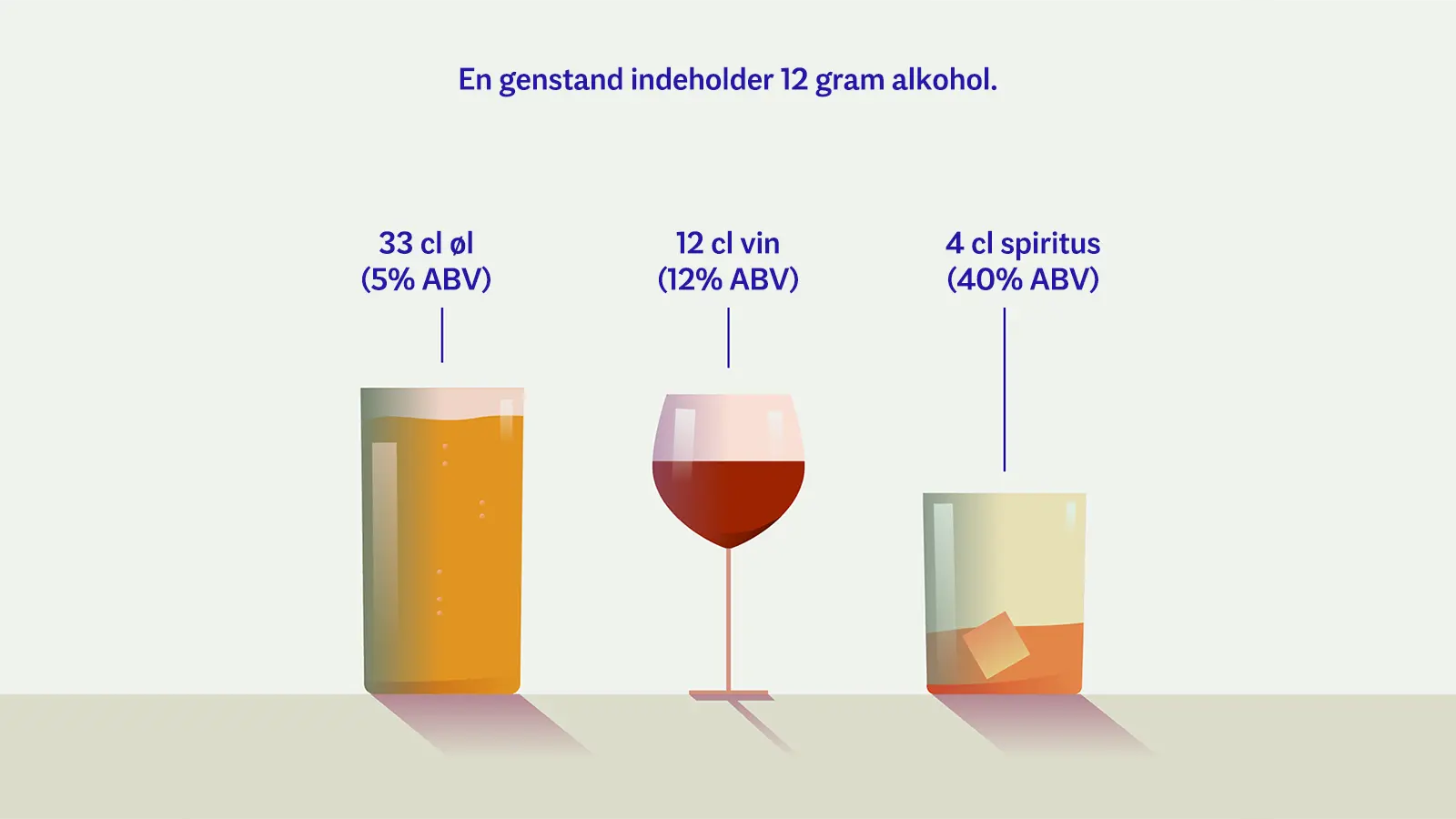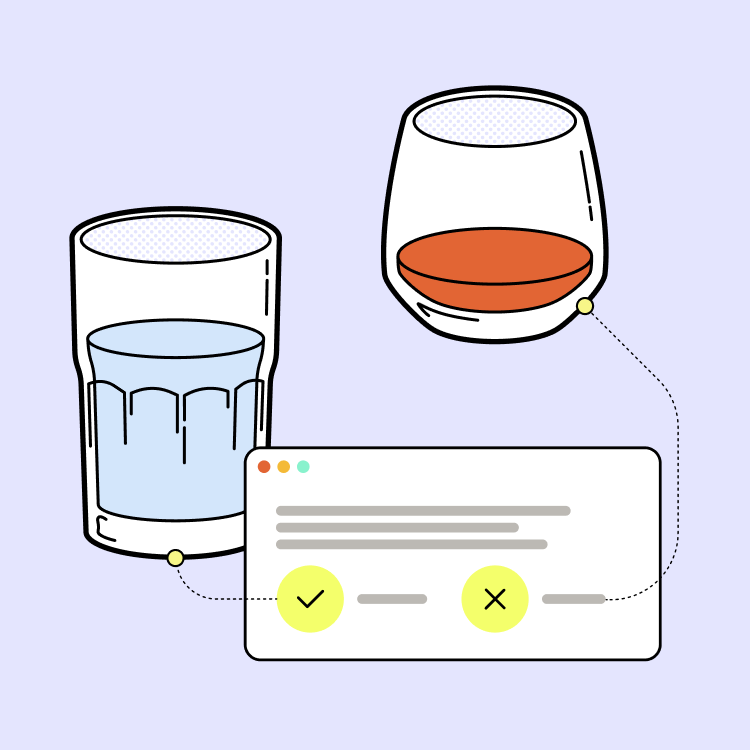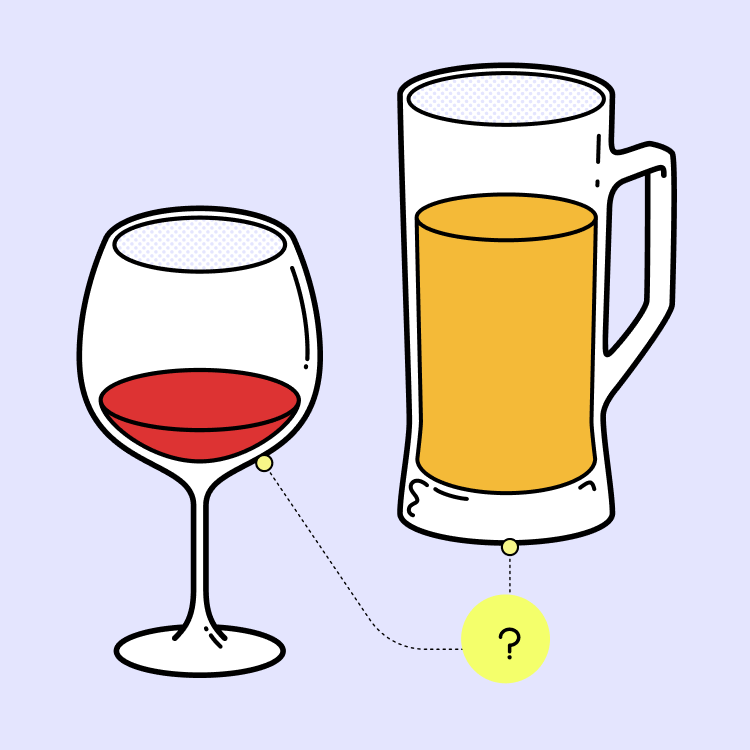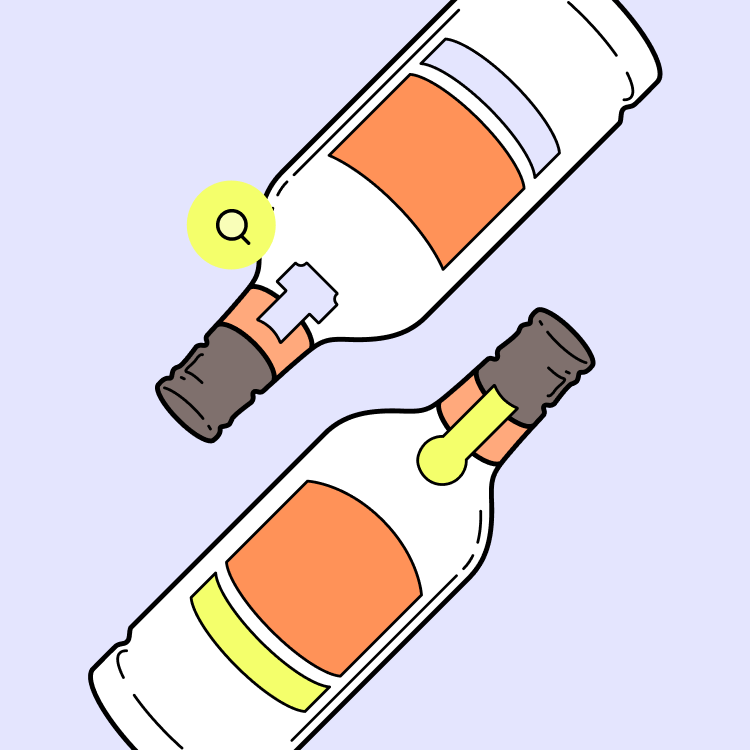Alle alkoholiske drikke indeholder ethanol, men mængden kan variere
Uanset om du drikker øl, vin eller spiritus, indeholder de alle den samme type alkohol, kaldet ethanol. Ethanol dannes, når enten frugt eller korn fermenteres med henblik på at fremstille alkoholiske drikke. Det er ethanolen i disse drikke, der påvirker dit humør og dine reaktioner – og ethanol påvirker dig på samme måde, uanset hvilken type alkohol, du vælger.
Forskellige drikke har selvfølgelig forskellige alkoholkoncentrationer. Dette udtrykkes generelt som alkoholprocenten efter volumen eller % vol. Du har muligvis bemærket, at flasker og dåser ofte har drikkens styrke som % vol påført på etiketten. Det er % vol, der kan fortælle dig, hvor meget alkohol, der er i din drik.
- Spiritus har den højeste koncentration af alkohol, og indeholder oftest omkring 40 % vol. Styrken kan dog variere meget. Nogle vodkaer indeholder 30 % ethanol, mens nogle whiskyer indeholder omkring 60 % vol, og noget alkohol med høj alkoholprocent kan indeholde helt op til 95 % alkohol.
- Likører, som også er spiritusbaserede, indeholder almindeligvis mindre alkohol, og alkoholprocenten kan være under 20 % vol.
- Vin er mindre koncentreret end spiritus og indeholder typisk mellem 12 og 15 % vol. Nogle vine kan dog være stærke, og brændevine, såsom portvin eller sherry ligger typisk omkring 20 % vol.
- Alkoholkoncentrationen i øl-kategorien er den laveste, og de fleste almindelige øl svinger mellem 4 og 10 % vol. Nogle specialøl kan svare til bestemte vine i styrke med cirka 12 % vol.

